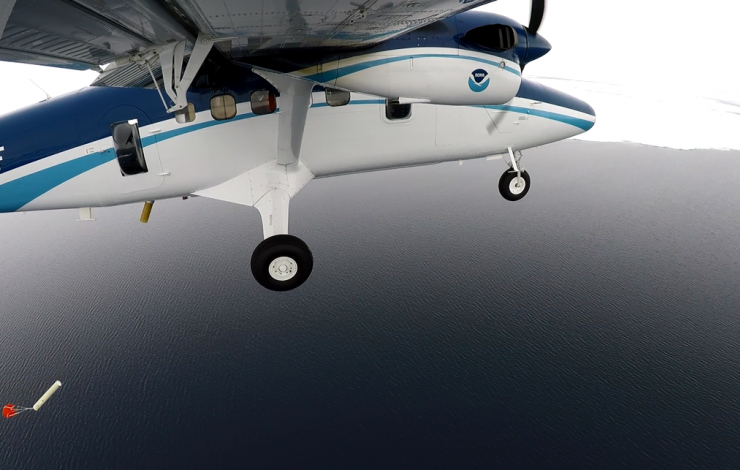Seasonally ice-covered marginal seas are among the most difficult regions in the Arctic to study. The scarcity of observing systems in these areas also hinders forecast services in the region and is a major contributor to large uncertainties in modeling and related climate projections. The Arctic Heat Open Science Experiment strives to fill this observation gap with an array of innovative autonomous floats and other near real-time weather and ocean-sensing systems that allow for continuous monitoring of changing conditions in the Chukchi Sea. Since 2016, over 1,000 Arctic Ocean profiles have been collected by the Arctic Heat project and transmitted in real-time via the Global Telecommunications System (GTS). Data collected during the 2017 field season showed particular warmth in the lower ocean which was a leading factor for the record late freeze up (1 month later than usual) in the region and likely would not have been detected without this field campaign. This event caused a ripple effect including impacts on whale migration patterns, physical ocean circulation patterns and subsistence hunt practices that depend on ice.
This week, researchers aboard the NOAA Twin Otter are launching various atmospheric and oceanographic probes and floats as part of the third and final flight campaign of 2018. They will launch an Air-Launched Autonomous Micro-Observer (ALAMO) profiling float and 20 Airborne eXpendable BathyThermographs (AXBT) and carry out a set of low level surveys around the R/V Sikuliaq using LIDAR, longwave radiometry, and thermal imaging. They will also be on the lookout for higher wind/wave situations to collection additional data for NASA's Ice, Cloud and land Elevation Satellite (ICESat) 2 which will be launched on September 14.
Arctic Heat is an open science experiment, publishing data generated by the project to further NOAA's Science Missions with real-time data to facilitate timely observations for use in weather and sea-ice forecasts, to make data readily accessible for model and reanalysis assimilation, and to support ongoing research activities across disciplines.
This mission is in coordination with the Office of Naval Research (ONR)'s Stratified Ocean Dynamics of the Arctic (SODA) in response to the White House Office of Science and Technology Policy's "Interagency Research Effort To Improve Weather, Ice, and Water Forecasting in the Arctic Ocean" led by ONR, NOAA, National Science Foundation, Bureau of Ocean Energy Management (BOEM) and NASA. Arctic Heat is a joint effort of NOAA Pacific Marine Environmental Laboratory (PMEL) Arctic Research, the Innovative Technology for Arctic Exploration (ITAE) program, the ALAMO development group at the Woods Hole Oceanographic Institution (WHOI), and the Joint Institute for the Study of the Atmosphere and Ocean (JISAO) at the University of Washington.



